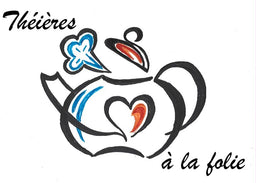Summary :
The concept of jade has never been defined very strictly. There are a wide variety of minerals known as jade in China. Generally speaking, minerals that are aesthetically pleasing, hard and warm can be called jade. And at the same time, there are others that fit very well into the usual definition of jade but are not called jade, such as this pretty stone known as agate. Chinese jade culture has a long history of more than 10,000 years. The ancients were superstitious and believed that jade had a protective effect against evil spirits. Jade was very precious, they used it to make ritual objects like statuettes, cups, plates, decorative objects such as bracelets, hairpins, rings and necklaces. Additionally, jade was so strong that it could withstand blows from a hammer, a property that even diamond could not match. China is the oldest and most widespread country in the world for the extraction and use of jade. Jade is one of the noblest minerals. Jade is rich in many elements, such as zinc, iron, copper, manganese, magnesium, cobalt, selenium, chromium, titanium, lithium, calcium, potassium and sodium. The main colors of nephrite are white jade, yellow jade, greenish white jade, purple jade, ink jade, jasper, green jade and red jade. Yellow nephrite is best, purple nephrite is more of a pale pink, ink nephrite is a jade with black spots on the jasper, and green nephrite is a dull, greenish white jade. White jade is most of the time the best. There are many shades of green jade, from light green to dark green, turquoise, gray-green, dark gray-green, and emerald green. Green jade is the most common jade, and its gemstone has increased in value over the years. White jade ranges from white to greenish white. White jade is a superior quality. Green-white jade is white in color, with faint flashes of green, gray-green in the white, and is commonly found in onion white, pink green, and gray white. It is a transitional variety between white jade and green jade. Topaz ranges from pale yellow to deep yellow, chestnut yellow, sunflower yellow, egg yolk and tiger skin yellow which is very rare, and has only been seen occasionally over thousands of years of exploration of the jade. The most famous jade in China is Hetian jade from Xinjiang, then there is Dushan jade from Henan province, Xiuyan jade from Liaoning province and Lantian jade from Shaanxi province which are part of the four jades. the most renowned in China. The quality of jade is generally judged according to five aspects: texture, hardness, transparency, specific gravity and color. Jade texture refers to the degree of fineness and warmth of the jade. One of the differences between jade and stone is that jade is delicate to the touch, warm and firm, translucent and lustrous like grease, whereas stone is rough and dry, without luster and also generally opaque. Hardness refers to jade's ability to resist external forces such as pressure, carving and grinding. The higher the hardness, the more difficult the processing, and the better the quality of the jade. The hardness of exit can be determined by testing the internal crystal structure of the stone using a special instrument. Its hardness is higher than that of copper and lower than that of glass.An alternative to jade then appeared, made from jade powder synthesized by artificial high pressure, which resembles Hetian jade in color and hardness, and must be studied with particular attention to identify it.
A quick word on this subject, during the international ceramics fair Jingdezhen A new type of porcelain has been praised by experts and visitors for its smoothness and jade-like translucency. It was developed by the Jingdezhen Porcelain and Jade Research Institute. The director of the institute Huang Sheming explains: the clay is mixed with jade powder, the ceramists have created jade porcelain, similar to jade. “It took us 10 years to develop such a material,” they say. Real jade cannot be painted because it cannot withstand high temperatures to set the colors. One can only engrave on jade objects, while jade porcelain allowed this.


